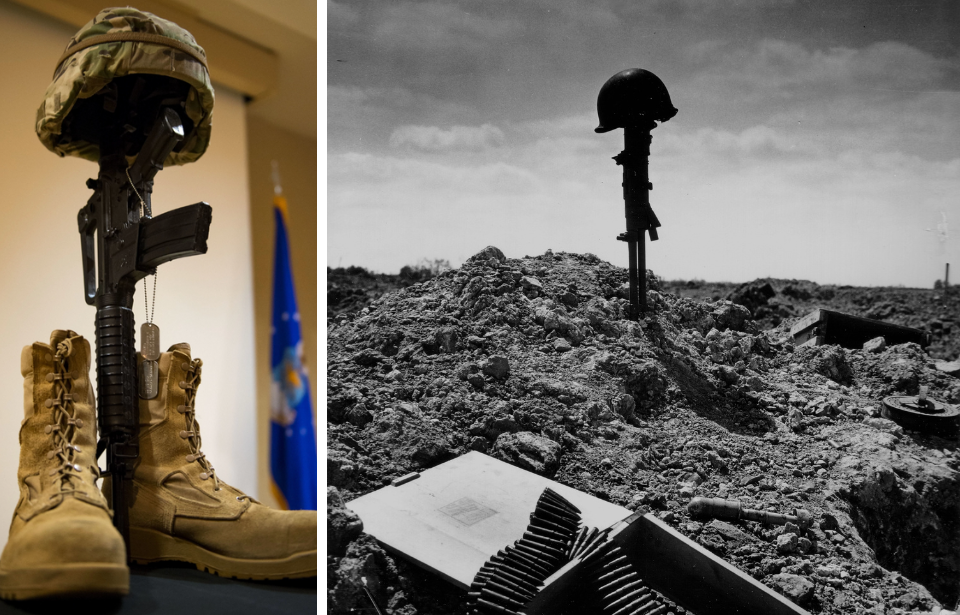The Battlefield Cross has gone from having a functional purpose to providing symbolic meaning for those mourning the loss of their comrades. Its imagery is simple, yet powerful; all that remains of a serviceman after they gave their life for their country. As its meaning has changed, its impact has significantly increased, providing closure for many and serving as a reminder of those who fought bravely and wound up making the ultimate sacrifice.
Origins of the Battlefield Cross
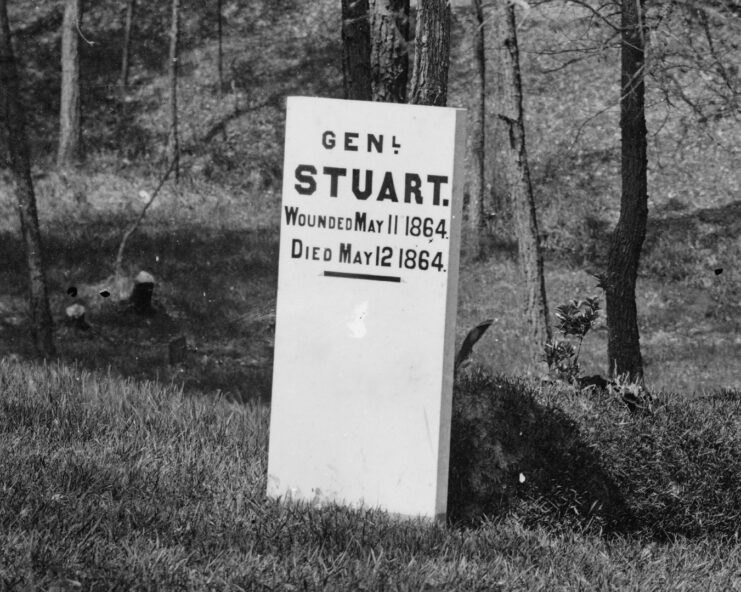
The very first use of the Battlefield Cross is unknown; its purpose and imagery have varied throughout history, making its origins difficult to date. However, many believe its use began during the American Civil War. During the conflict’s bloody battles, soldiers fell in droves, littering battlefields with bodies.
Fallen soldiers were removed en masse and buried in temporary graves. Simple wooden plaques marked these burial sites, and featured the soldier’s name, their unit and the date of their death. These are typically referred to as the first configuration of the Battlefield Cross.
Changing imagery during World War I and II
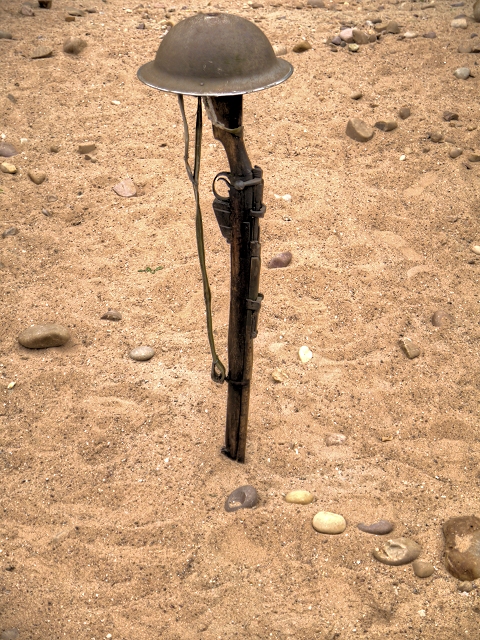
Upon the outbreak of the First World War, troops became equipped with new uniforms and weaponry. Helmets and rifles became the foundation of the reimagined Battlefield Cross. Over time, the wooden plaques used to signify the graves of fallen soldiers were replaced with their rifles, which were partially buried in the ground, and their helmets perched on top.
During the Second World War, militaries issued dog tags to troops, making identification easier if they died on the battlefield. It didn’t take long for the accessory to become incorporated into the Battlefield Cross, serving as an additional piece of information to aid the Graves Registration Service (GRS) personnel as they removed bodies for burial.
Transforming into a memorial
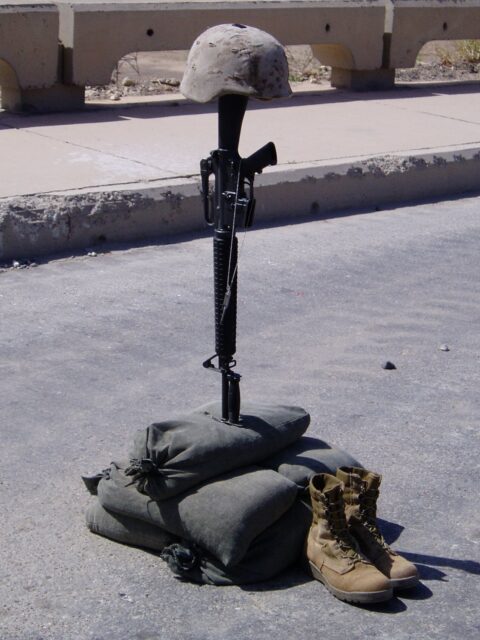
While the Battlefield Cross served a bureaucratic function for the military, it also transformed into a symbol of memorialization for those who gave their lives serving their country. This line of thinking is often attributed to the Korean War, when the system for handling the dead was updated to include moving the deceased to staging sites, rather than burying them in temporary graves.
Retired US Army Maj. Larry Owens describes it as “a symbol of loss, a symbol of closure for the surviving soldiers as they honor their comrades who sacrificed their lives for their country.” Not everyone can attend formal funerals for their fallen comrades, especially when they’re still deployed. The Battlefield Cross affords them a way to pay their respects.
“After each battle, the unit would have a memorial service for those lost. As a symbol for each soldier lost, a weapon would be placed in sand bags and they would hang his dog tags on it,” Owen said. “Each soldier would come forward and either kneel or touch the helmet. It was a symbol of closure.”
Modern Battlefield Cross during the Gulf War
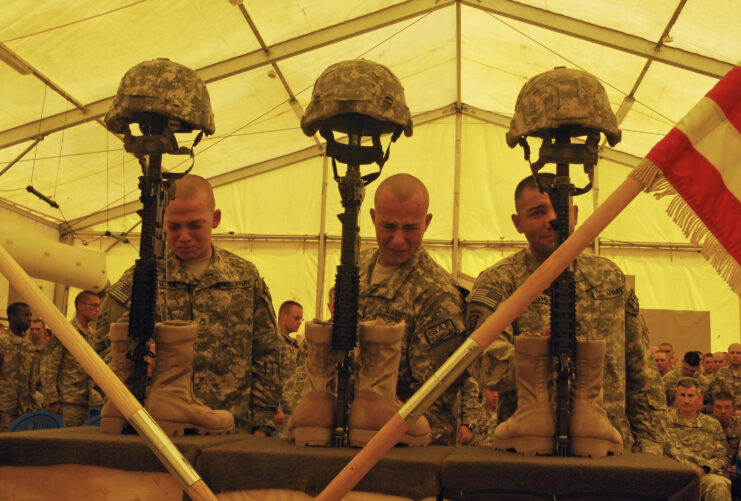
It was during the Gulf War that the Battlefield Cross as it’s known today took shape. The cross itself now has different components: rifle, helmet, dog tags and boots. It was widely used during the conflict, as well as in Afghanistan and Iraq.
Some of the components’ meanings have developed various interpretations over time. The US Army Field Manual describes each, suggesting the standard, but some have deviated from this. The manual states that the helmet and dog tags signify the dead soldier, while the inverted rifle signifies a time to pay tribute and the combat boots, their final march. For paratroopers, the beret shows they participated in their final jump.
Other interpretations include the upside-down rifle, which indicates the soldier was killed in action (KIA), while a rifle with its bayonet in the ground means they went down fighting. Additionally, some interpret the dog tags as a symbol that the serviceman is “never to be forgotten.”
The ceremony held to commemorate those who have fallen typically involves the unit sharing a biographical summary of those they are honoring, discussing their service, and mentioning the awards or decorations they achieved during their military career.
Statues to permanently symbolize the Battle Cross’ meaning
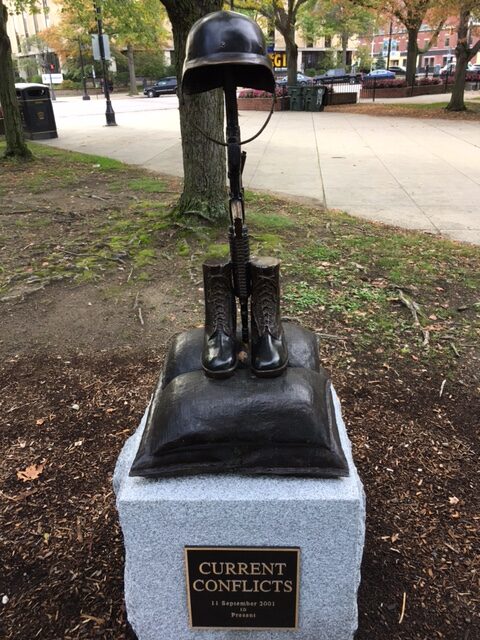
Although the Battlefield Cross is predominantly used on the battlefield, there are multiple statues of the modern variant that have been erected in the United States. On November 11, 2008, a bronze statue of the symbol was erected at Del City, Oklahoma’s Patriot Park. It not only displays the four components of a traditional Battlefield Cross, but also two steel silhouettes of soldiers kneeling and paying their respects.
Three other separate Battlefield Cross statues are on display at Veterans Memorial Park in Manchester, New Hampshire. One honors those who gave their lives during the Second World War, the second is for those who perished in Vietnam and the third is dedicated to all who’ve been lost in “current conflicts.”
More from us: Meuse-Argonne Offensive: The Deadliest American-Involved Campaign of World War I
There’s also a sign at Veterans Memorial Park that describes the Battlefield Cross’ symbolism beyond being a placeholder for bodies removed from the battlefield. It reads:
“The Battlefield Cross is a symbolic representation of a cross for a soldier who has been killed in battle. This tradition originated during World War I and has continued in every conflict since. The crosses are erected by comrades in arms to show honor and respect for the brave souls who gave their lives in service to their country.”
